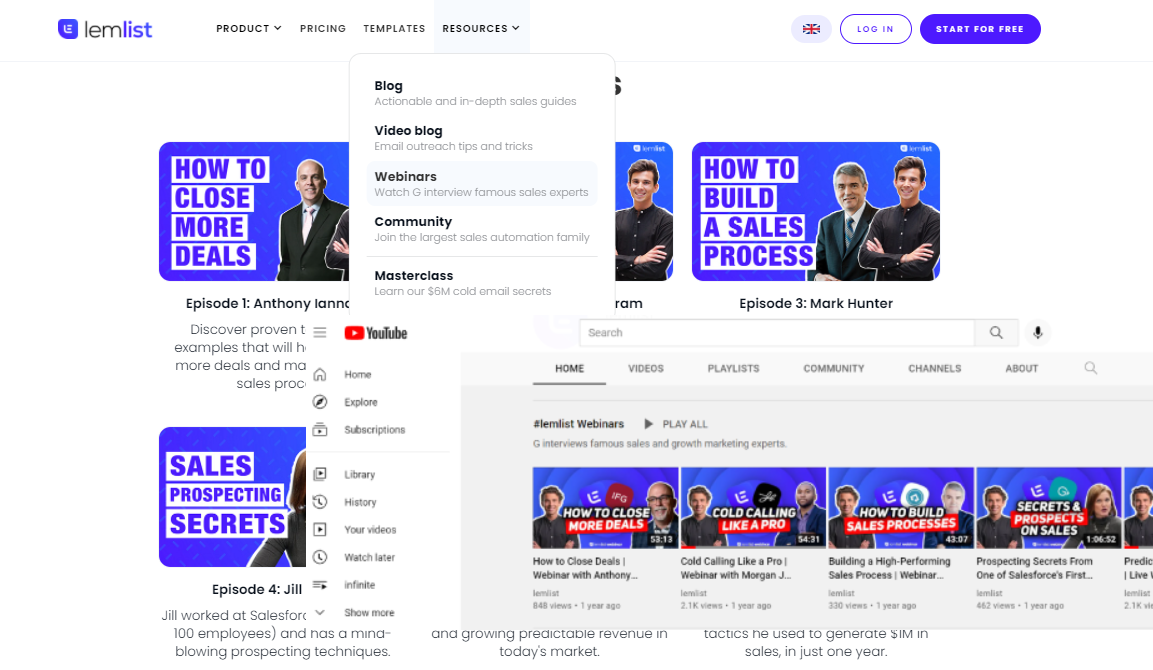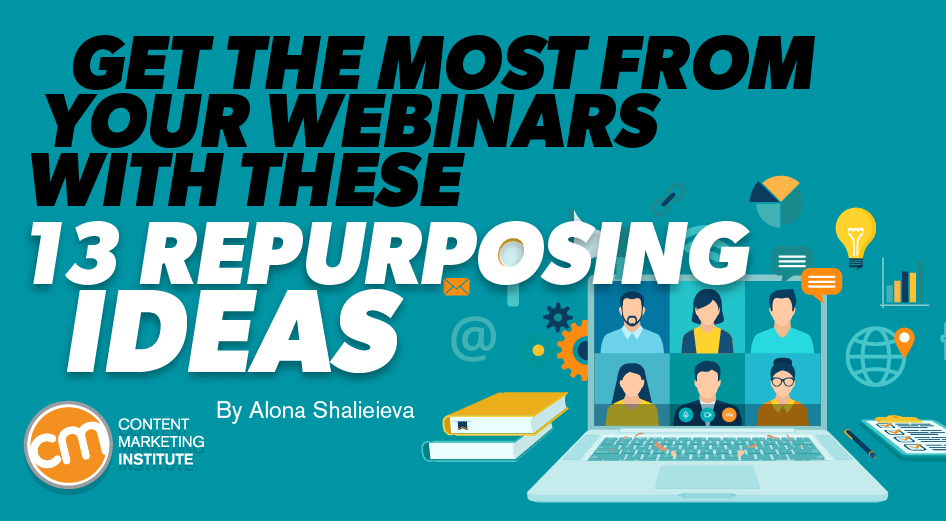 B2B content marketers say webinars rank as the most effective tactic. They attract attention, leads, and engagement.
B2B content marketers say webinars rank as the most effective tactic. They attract attention, leads, and engagement.
That success doesn’t have to end when the webinar does. And yet only 48% of marketers say they planned to use their webinar content after the event, according to an Omnipress report. Repurposing the webinars into a multitude of formats lets you reach new audiences, reinforce messaging with previous attendees, and promote your brand’s expertise on the topic.
Repurpose your webinars into a multitude of content formats to attract new audiences, reinforce messaging, and promote your brand’s expertise, says Alona Shalieieva of @GetProspect_com via @CMIContent. Click To Tweet
Let’s explore some of the options.
1. Create content for social media
Creating videos is the most straightforward example of how to turn webinar materials into engaging content. You can use the recording to develop Instagram Reels or large clips for social media.
Chop the juiciest parts and add text. In this Twitter post, BrightTalk uses a snippet from episode one of The Studio series to promote registration for episode two:
Should #videos be created around who your ultimate prospect is for #B2B engagement?
BrightTALK’s art director, Nyekha Bennett, discusses the work in understanding your ultimate #prospect.
And register now for Ep. 2 of The Studio! https://t.co/1tyrmLgjVR pic.twitter.com/nFoQBHz89A
— BrightTALK (@BrightTALK) September 2, 2020
In this case, the video answers the question posed in the tweet: Should videos be created around who your ultimate prospect is for B2B engagement?
You can apply this example to Instagram, Facebook, and even TikTok. The video length should be between 15 and 60 seconds.
Or you can take chop up your webinar into multiple mini versions to use for educational and/or promotional purposes. Consider adding to your YouTube channel as lemlist does:

2. Transform into a podcast
Your webinar can become a podcast if you separate the audio file from the video file. The most successful webinar-turned-podcast benefits from a more structured concept. Before you record the webinar, inform speakers that it will be repurposed as a podcast. That way, they can explain visuals that a webinar audience could see but a podcast audience couldn’t.
Or you could ask the speaker to record a podcast after the webinar so they could continue the topic and, perhaps, answer more questions posed by the community.
3. Write an article
Act like a reporter by covering the webinar for your blog or other content hub. In this example, the Asian Institute of Management wrote up the key takeaways from their event (and promoted it) on LinkedIn:

4. Share the unplanned surprises
Though unusual, something can happen in a webinar that’s unexpected but worth further mention or celebration.
During a live webinar, Rappler’s CEO found out she was a Nobel Peace Prize laureate. They shared that moment with audiences who didn’t get to see it in real time:
Where was Rappler CEO @mariaressa when she found out she was one of the Nobel Peace Prize laureates for 2021? In the middle of a live webinar about independent journalism. Watch it here.
Read the story: https://t.co/Xtr0VsxMrf pic.twitter.com/BHiWm398LO
— Rappler (@rapplerdotcom) October 8, 2021
5. Use quotes for emphasis content
Quotes from webinar speakers are great for defining the focus and attracting attention.
Though this Instagram example from the United Nations comes from a meeting, not a webinar, it shows the opportunity. The statement is the visual accompanied by a longer text excerpt in the caption:
TIP: You can turn quotes from your webinars into a quote-of-the-day program, encompassing the text and/or video clip as a recurring feature on social media.
Turn quotes from your #webinars into a quote-of-the-day program as a recurring feature on #SocialMedia, says Alona Shalieieva of @GetProspect_com via @CMIContent. Click To Tweet6. Publish an e-book
Many webinars use slide decks to help their audience follow along. If well detailed and well structured, this content can be inserted into a standard e-book template. With the addition of an intro, table of contents, and conclusion, you’re ready to publish the e-book.
Transform a presentation slide deck into an e-book. Just add an intro, table of contents, and conclusion, says Alona Shalieieva of @GetProspect_com via @CMIContent. Click To TweetNot ready to do an e-book? Create a shareable link for the slide deck and promote it in your newsletter, blog, or on social media.
TIP: Get permission from the presenter to use their slide deck in other formats.
7. Start a discussion
Audience questions can be a valuable source of post-webinar content. Look how Jayant Bhaat, an advocate from New Delhi, took a question he was asked during a webinar to drive a conversation on LinkedIn:
If you have a lot of questions asked in your webinar (or over multiple webinars), you can create an FAQ article or page.
More ways
You don’t have to stop at those suggestions. Here are a few more webinar options:
- Get a transcript from the webinar and edit it into an article.
- Take the research, stats, and other numbers shared and create an infographic.
- Transform the webinar into a course that could be used as a lead magnet.
- Use snippets from the webinar to create a sequence that could be used in an automated drip campaign.
- Give access to the recorded webinar to existing subscribers – or allow new subscribers who sign up to view it.
- Cut a short excerpt that could be used to introduce a blog article on the same topic in a newsletter.
Do more than a webinar
You put a lot of effort to create, promote, and execute a webinar. It only makes sense to do more with that content. Even if you pick only one or two of these ideas, the benefit to your brand and audience will be far greater than the original one-time event.
HANDPICKED RELATED CONTENT:
Cover image by Joseph Kalinowski/Content Marketing Institute

